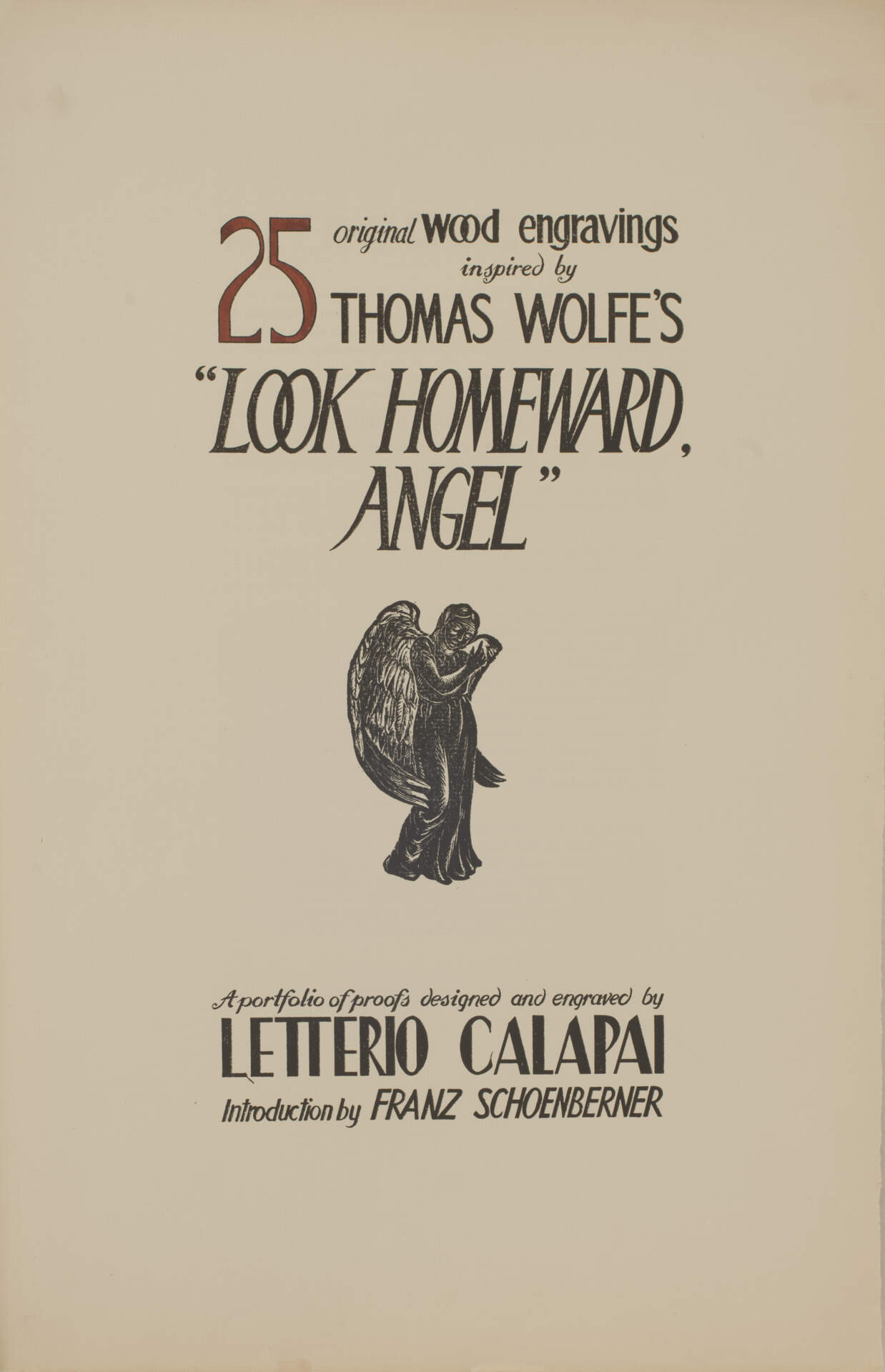Letterio Calapai (1902–1993)Thomas Wolfe, Look Homeward, Angel (1929), prints by Letterio Calapai (1948)
1948
Folder, black ink on cream laid paper, with hand-painted number 25
20 x 14 inches folded
Burchfield Penney Art Center, Gift of Dr. Kathryn L. Francis, 2017
In his Introduction printed in this folder, Franz Schoenberner describes the unique multi-media process by which Calapai produced 25 prints:
Love would not be enough without the artistic vision and the supreme workmanship which here succeeded in giving, through another medium of art, a new inspired expression of Thomas Wolfe’s inspired word.
The combination of the wood engraving with the printed type as in the illustrated book seemed not sufficient to make visual the most intrinsic relationship between the poetic phrase and its graphic paraphrase. In order to achieve this purpose Letterio Calapai invented a new technical process. The text, etched in calligraphy and printed from a copper plate in terra cotta (in the manner of a woodblock) became an organic entity with the wood engraving—the colored frame enclosing both. Moreover, this new manner of printing created a sculptured plaque effect reminiscent of the rubbings taken from the bas-relief tombs and stone engravings of the early Chinese (Han Period). However, it differs in that it was made a positive rather than a negative form of the original. The closest precedent to this was William Blake, who in 1787 combined design and calligraphy in his engravings.
